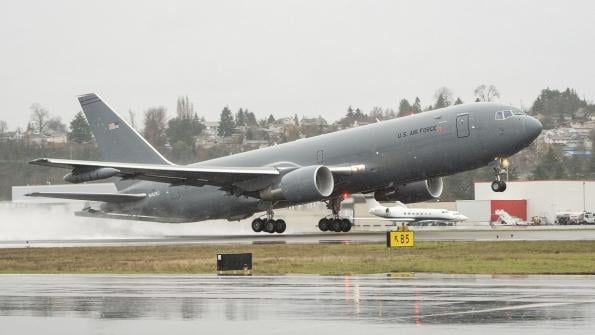
The U.S. Air Force does not believe Boeing’s proposal for the KC-46 Remote Vision System (RVS) will meet the program’s critical performance parameters, according to a service official.
This is based on evidence the service has seen to date, Lt. Gen. Jon Thomas, Air Mobility Command deputy, told Aerospace DAILY Jan. 29.
“The tanker is not capable of all of its missions and won’t be until the problems with the Remote Vision System are fixed,” he said.
The Air Force is counting on the KC-46A Pegasus to recapitalize its tanker fleet and delays to the program only exacerbate the service’s capacity problem.
“It’s really hard for us to consider the KC-46 part of our operational capacity,” Thomas said.
The Air Force awarded a contract to Boeing in 2011 for $4.9 billion to deliver 179 KC-46A aircraft through 2027. The two parties are still negotiating the scope of a final redesign of the aircraft’s RVS. The new technology is essentially the eyes for the boom operator.
The problem with the RVS is what the Air Force calls a “rubber sheet” effect that distorts the image on the visual display used by the boom operator during refueling operations. Boeing has agreed to pay for the RVS design fix.
The company maintains getting the KC-46A program back on track is a top priority. Boeing CEO David Calhoun met with Air Force chief of staff Gen. David Goldfein on his third day on the job. The chief executive said he must spend the majority of his time fixing the 737 MAX but it does not mean the KC-46 will be overlooked.
“We’re committed to see that through and see it through the right way,” Calhoun said Jan. 29. “It’s going to finish beautifully.”






Comments
“Sarge, get back there. We’ll see you after they’re refueled.”
Nearly 70 years of success despoiled by the opinion of who?